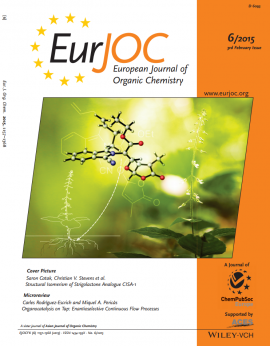Beyond the diketopiperazine family with alternatively bridged brevianamide F analogues
Abstract
A method for the preparation of 3,5-bridged piperazin-2-ones from a tryptophan–proline-based diketopiperazine is described using diphosgene to induce the ring closure. Density functional theory calculations were conducted to study the mechanism of this C–C bond formation. Several derivatives of the thus obtained α-chloroamine were synthesized by substitution of the chlorine atom using a range of O-, N-, S-, and C-nucleophiles. This novel class of brevianamide F analogues possess interesting breast cancer resistance protein inhibitory activity.



